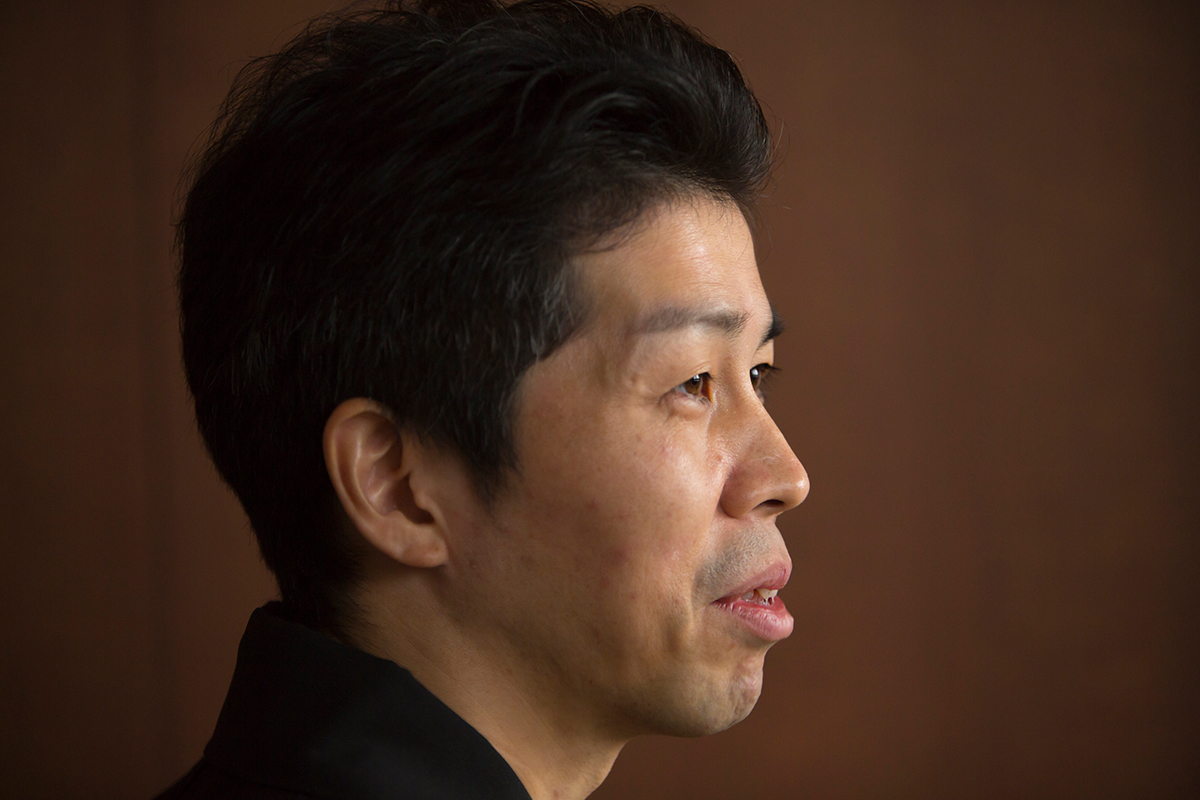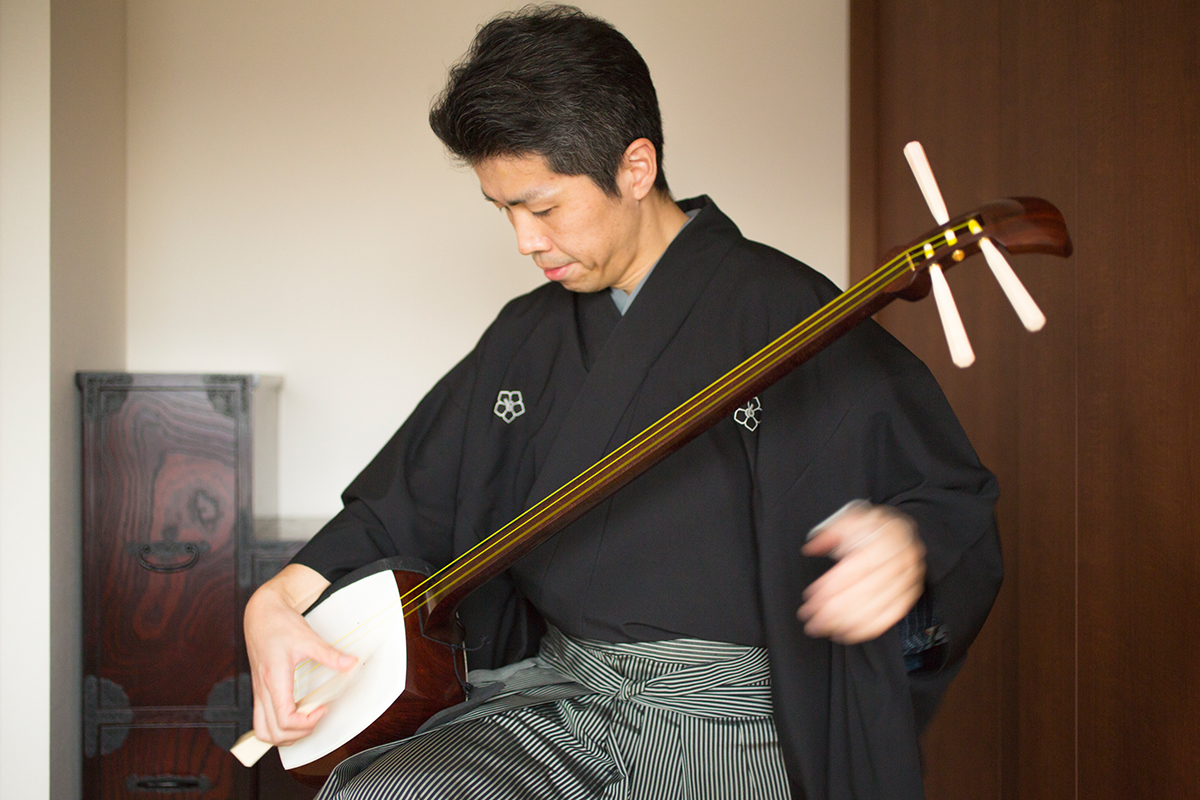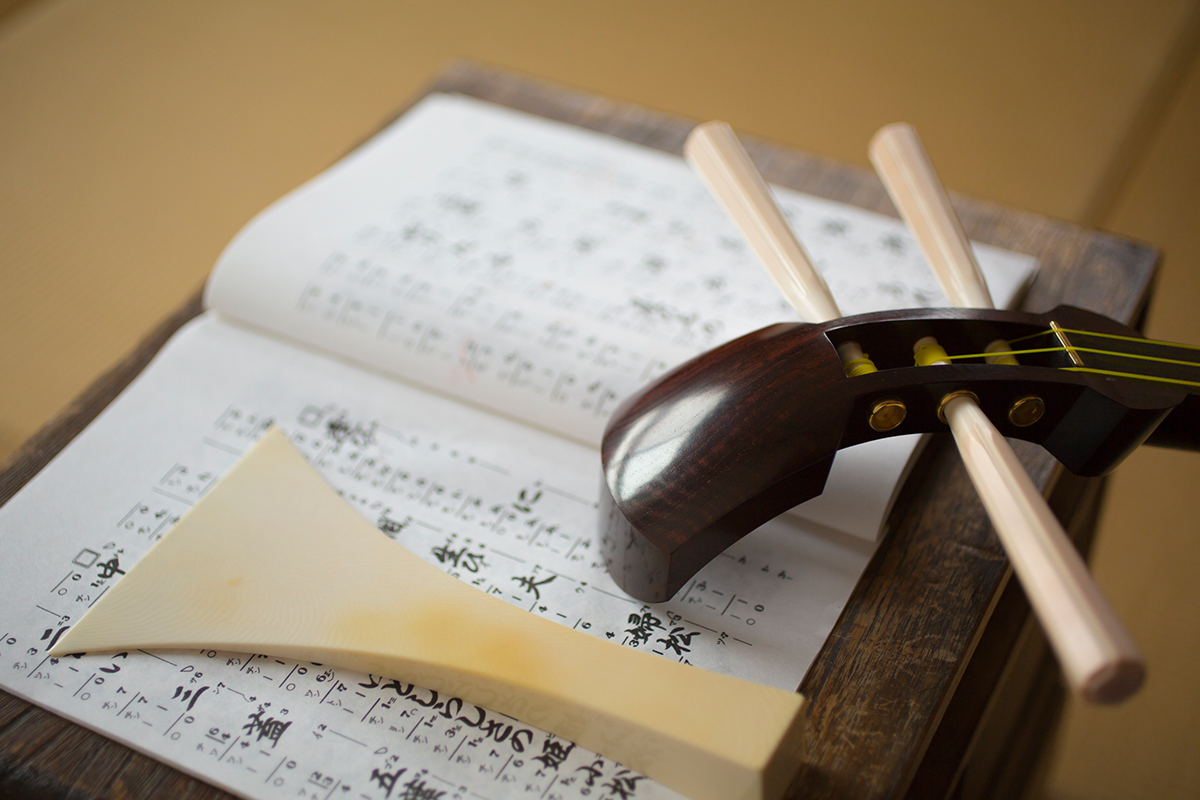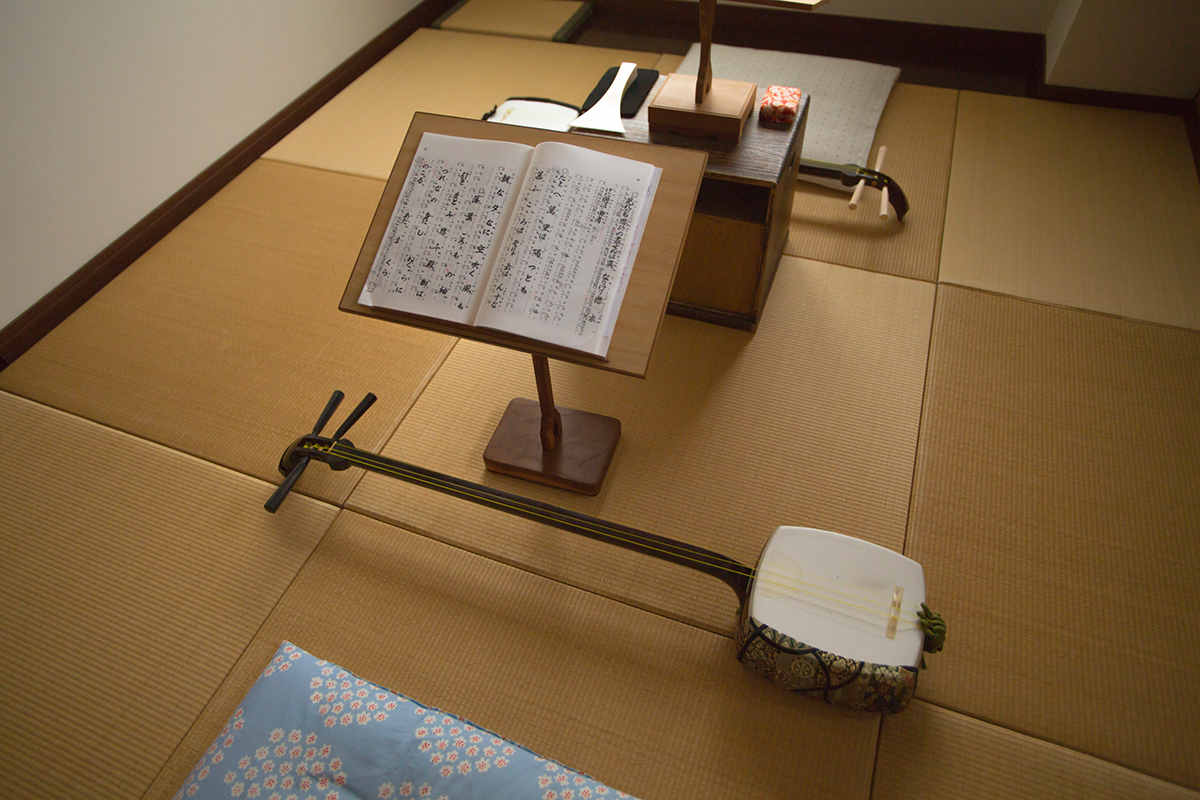目次
Goals as a Professional Performer.

-What kind of work is available for a professional Shamisen performer?
A Shamisen performer can make income by performing in Shamisen recitals, Japanese dance performances, Kabuki, by doing office duties in the practice room and also performing at hotels/restaurants and at various other events.
On the other hand, I have my personal recitals and usually they cost money to organize, so they don’t really bring in any income. I do them for my own training and technical improvement.
-It seems that if you play the same song in different settings it changes, is that right?
If a piece is played for a dance, then the tempo is different than if it was played at a recital.
For example, even in (Western) Classical music, if a piece is played for dancers to dance to, it will sound different from how it would sound if it was being played for a audience.
Apart from at a dance show, Nagauta “Aikata” is also used at the Rakugo theatre in “Debayashi” style.
In this case, they have to play at the same tempo so that the Hanashika (Rakugo storyteller) would be able to easily come out onto the stage.
Aikata: Pieces only performed with the Shamisen. For example, “Tsukada no Aikata” from Azuma Hakkei, “Mushi no Aikata” from Aki no Iro Kusa, etc. They are named after the image the the melody gives.

-What are the charm points of the Nagauta?
Most Nagauta pieces are from the Edo period about 150-200 years ago, so there are pieces which have survived over such a long period of time.
This is actually really amazing when you think about it. Of course, at that time there were many pieces that were lost, but if you think about music nowadays maybe only a few pieces would survive over the next 100 years.
When you think about it, these old pieces which we are performing are timeless.

One thing we can say is that these timeless pieces share is that “there is no waste”.
Within the piece you know a change is being formed in the piece once you notice a redundant section in the music.
In the same way as tea ceremony or Japanese dance, for example, the pieces are refined over time until all the “waste” is taken away and “beauty” is created.
By getting rid of waste, all of the movement in the piece flows naturally, it looks beautiful and the resulting sound is beautiful too.
I’m thinking the answer is that one thing that I am pursuing is “art”.
As a Nagauta Shamisen performer, I do what I do, because I want people to hear the charm of the Shamisen.
It is thought that it is up to the students to think about the interpretation and think how to express the piece well and with care when performing.

Mr Hozumi’s lesson room. (Meguro school)
-What is the good performance sound you are aiming for?
I probably keep practising because I am not sure of the answer myself (lol).
My desire for good sound is getting stronger as I want to think that I can make my sound better than before, but as I pursue my own sound my ear for sound is becoming more refined.
As this happens, I want to aim for a better sound and be able to produce it all the time. So in this way, my goal gets further and further away.
About 10 years ago, when I went to see a three instrument ensemble with a Shakuhachi, Koto and Shamisen, someone told me that the sound of the Shakuhachi is like the sound of the wind, the Koto is like a tree and the Shamisen is like a rock.
It makes me feel as though I can see Japan’s scenery and nature, so this made me feel like I want to express the charm of my instrument more when I perform.
There may be a long way to go yet, but the more people that listen to the Shamisen sound and feel pleased by the sound, then that is the best feeling for me as a performer.
(Video, Photo/Maki Matsuda/Text/Edo Note Editing Department. Created: 2016)

